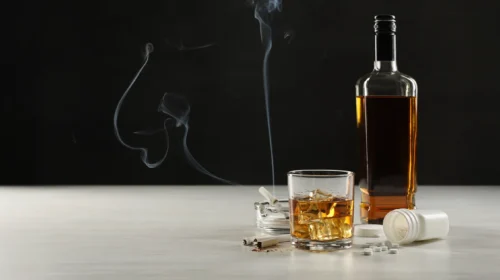Valium withdrawal lasts for different periods, depending upon how long and how much for the drug you’ve been using. Valium (diazepam) is a benzodiazepine (benzo) with a potential for dependence and addiction, and it carries a risk of overdose, particularly when misused or combined with other substances.
Data from the Centers for Disease Control and Prevention (CDC) indicates that Valium and other benzos were involved in nearly 7,000 overdose deaths in 23 states from January 2019 to June 2020.[1] This accounts for over 17 percent of all drug overdose deaths for that period.
Many who are prescribed Valium for anxiety disorder don’t know they’re having dependency until it’s too late. Learn more about Valium, including how long it may last, what to expect, and how to overcome it.
What Is Valium?
Diazepam, commonly used under the trade name Valium, is a type of benzodiazepine medication that’s used to treat anxiety and anxiety disorders, treat withdrawal syndromes for certain substances, manage seizures, and for insomnia.[2]
While Valium was once a widely used medication, it is now less commonly prescribed as a first-line treatment for anxiety due to concerns about its potential for abuse and dependence. Even when used as prescribed, Valium can lead to physical dependence and withdrawal symptoms may occur if the medication is discontinued abruptly.
How Does Valium Dependence Happen?
Benzodiazepines like Valium have a high potential for abuse and dependence. They’re listed as Schedule IV controlled substance by the US Drug Enforcement Agency, so they can only be legally obtained with a prescription.[3]
Even in medical settings, benzos are recognized for abuse and dependence. They often contribute to polydrug abuse and addiction because they’re mixed with alcohol, narcotic painkillers, and other drugs to enhance the effects.[4] Mixing benzos with other substances significantly increases the risk of fatal overdose.
Valium doesn’t need to be misused to lead to physical dependence and withdrawal. Even taking therapeutic doses of Valium as prescribed can lead to tolerance, meaning that more of the drug is needed to achieve the same effects.[5] When someone with Valium tolerance reduces the dose or stops taking the drug, they may experience withdrawal symptoms.
Though physical dependence is one of the criteria for a substance use disorder – the technical term for drug addiction – it’s not necessary or sufficient on its own for a diagnosis. People who take Valium as prescribed can develop tolerance without being addicted – but they may still have extreme withdrawal symptoms.
Valium Withdrawals Symptoms
Valium withdrawal symptoms can vary according to many factors, but the symptoms often include:
- Cognitive decline
- Memory impairment
- Anxiety
- Depression
- Difficulty managing stress
- Tired feeling
- Fatigue
- Flu-like symptoms
- Nausea and vomiting
- Persistent headache[6]
Withdrawal symptoms often occur as a result of taking benzos at higher doses or for longer periods. Generally, a tapered dose guided by a physician is recommended to “wean” off Valium and reduce withdrawal symptoms.
Valium Withdrawal Timeline
The duration of withdrawal from diazepam can vary widely depending on individual factors and the extent of use, but it commonly ranges from a few days to several weeks. The stages often include:
- Days 1-7 – Valium is a long-acting medication whose effects generally last four to six hours. It can take up to a week for side effects to manifest. During the first week of withdrawal, common symptoms may include a fast heartbeat, high blood pressure, and fever.
- Week 2 – The second week of withdrawal is generally when your symptoms are at their worst. You may also experience more symptoms, like tremors and shaking, anxiety and irritability, confusion and disorientation, sweating, agitation, hallucinations, and seizures.[7]
Symptoms should gradually lessen in scope and severity during the third and fourth weeks of withdrawal. After a month, they should all but disappear. Although you may not feel effects after a month, Valium can stay in your system for longer than that:
- Up to six weeks in the urine
- Up to 48 hours in the blood
- Up to 10 days in the saliva
- Up to three months in hair follicles
Understanding the withdrawal experience with Valium is important for reducing the risk of relapse and staying safe while the drug clears the system. Rebound anxiety and physical symptoms can be extremely difficult to manage, which is why it’s not recommended for people to quit Valium “cold turkey.”
Post-Acute Withdrawal Syndrome for Valium
Post-acute withdrawal syndrome (PAWS) is a set of withdrawal symptoms that can persist for weeks or months after the initial withdrawal period. PAWS may also be referred to as a post-withdrawal syndrome, prolonged withdrawal syndrome, or protracted withdrawal syndrome.
Typically, PAWS symptoms manifest after withdrawal from alcohol, opioids, and benzodiazepines like Valium. The symptoms may include:
- Difficulty with learning, problem-solving, and memory recall
- Irritability
- Feelings of anxiety or panic
- Depressed mood
- Obsessive-compulsive behaviors
- Intense cravings
- Apathy or pessimism
- Sleep disturbances[8]
Medication and Detox for Valium Withdrawal
Valium is often used to help with withdrawal symptoms from other substances, including other benzodiazepines, and tapered off once the withdrawal symptoms subside. With withdrawal from Valium itself, several medications may be used to manage symptoms:
- Selective serotonin reuptake inhibitors (SSRIs): These antidepressant medications are useful in addressing rebound anxiety.
- Melatonin: This hormone can relieve anxiety and induce sleep to help with withdrawal symptoms.
- Anticonvulsant medications: These medications are used to help with seizures that may occur during withdrawal from Valium.
- Baclofen: This muscle relaxant, which goes by the names of Gablofen, Lioresal, and Kemstro, can help reduce cravings for different substances, including benzos.[9]
Because of the severity of Valium withdrawal, it’s best to get support with medical detox instead of detoxing on your own at home. Medical detox provides care and supervision to help you manage your withdrawal symptoms and ensure that you’re as safe and comfortable as possible.
Get Help with Valium Withdrawal
If you or a loved one is struggling with Valium dependence, Recovery Unplugged can help. We offer expert, compassionate, and supportive medical detox at our facilities, as well as a full range of addiction treatment services. Don’t do it alone. Contact us today to get started.

























